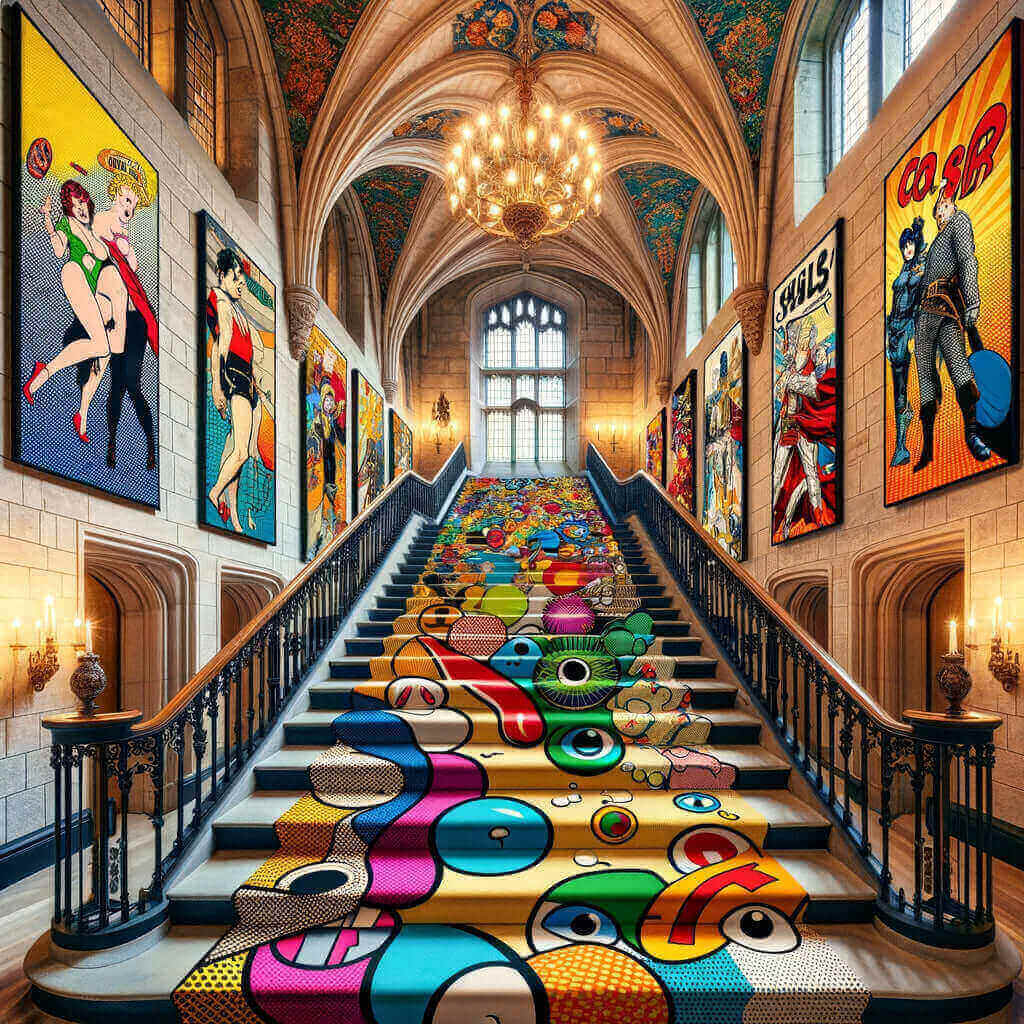![]()
The Psychology of Pop Art Colors in Interior Design: Unleashing Mood and Energy Through Vibrant Palettes
Pop Art, with its bold and audacious use of color, has transcended the art world and found expression in various aspects of life, including interior design. But beyond the visual appeal, these vibrant hues hold the key to influencing the mood and behavior of individuals within a space, drawing upon the principles of color psychology.
The Pop Art Palette: A Symphony of Energy and Emotion
Pop Art thrives on a distinct color palette characterized by:
-
Primary colors: Vivid reds, yellows, and blues take center stage, injecting an undeniable sense of energy and excitement into the space [1].
-
High saturation: Colors are presented in their most intense and purest forms, amplifying their visual impact [1].
-
Bold contrasts: Unexpected color pairings, like red and turquoise or yellow and purple, create a dynamic visual interplay, grabbing attention and sparking interest [2].
Colors and Their Psychological Effects:
Understanding how different colors influence mood and behavior is crucial when incorporating Pop Art principles into your interior design:
-
Red: Stimulating and passionate, red can evoke feelings of excitement, power, and even aggression. Use it sparingly or in balanced combinations to avoid overwhelming the space [1].
-
Yellow: Uplifting and optimistic, yellow is associated with happiness, creativity, and intellectual stimulation. It can brighten a room and promote feelings of well-being [1].
-
Blue: Calming and serene, blue fosters feelings of peace, tranquility, and trust. While Pop Art often utilizes bold shades, incorporating lighter blues can create a sense of relaxation and focus [1].
-
Black: Sophisticated and dramatic, black adds depth and creates a sense of luxury. Used excessively, however, it can appear overly serious or even constricting [3].
Creating a Pop Art Atmosphere:
Here's how to leverage Pop Art colors and harness their psychological effects to create the desired atmosphere in your space:
-
Energize your workspace: Utilize pops of red and yellow alongside neutrals or complementary colors to create a stimulating environment that promotes concentration and creativity.
-
Embrace playfulness in a child's room: Opt for a combination of bright and cheerful colors like yellows, greens, and blues, creating a vibrant and playful space for kids.
-
Foster relaxation in your living room: Utilize calming blues and greens alongside neutral tones to create a serene and inviting space for relaxation and social gatherings.
Remember: Color psychology is subjective, and individual responses can vary. Experiment with different color combinations and observe how they make you feel within the space.
By understanding the psychology behind Pop Art colors and their influence on mood and behavior, you can create a living space that is not only visually captivating but also fosters the desired emotions and experiences.
Sources:

